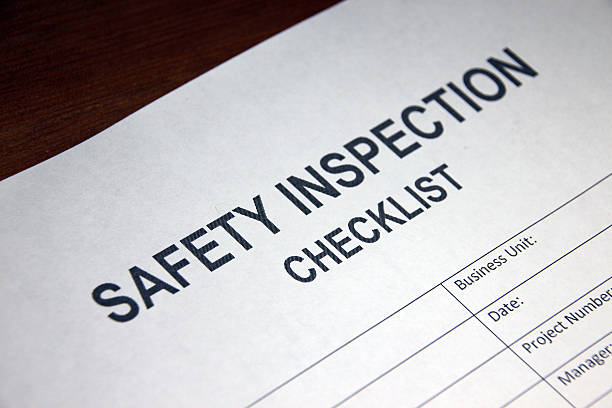
Introduction
Audit‑ready fire & electrical compliance Nottinghamshire is not simply a “nice‑to‑have” for commercial sites—it’s an essential safeguard for safety, legal compliance and business continuity. Whether you own a warehouse, retail unit or office block in Nottinghamshire, you may face inspections from enforcement officers or insurance auditors who expect rock‑solid documentation and fully maintained systems. Many businesses assume that because the fire alarm panel lights are green, or because someone “checked the wiring last year”, they’re covered. Unfortunately, that assumption often leads to failed audits, increased insurance premiums or worse — critical safety failures.
In this guide we’ll walk you through a 7‑step checklist that ensures fire & electrical compliance and your site is ready for audit, from documentation to wiring to emergency systems. Use this checklist for your next review with your provider or your internal team.
Why Audit‑Ready Fire & Electrical Compliance Nottinghamshire Matters
For any commercial property, fire and electrical compliance intersect at the point where risk meets regulation. Electrical faults remain a leading cause of commercial fires in the UK, and audit officers often focus on gaps in maintenance history, outdated wiring or missing test records. For Nottinghamshire businesses, being audit‑ready means:
- Having documented test results (fire alarm, emergency lighting, fixed wiring)
- Demonstrating that systems are maintained to the correct standards
- Minimising exposure to enforcement action or insurance claim rejection
For example, a local fire safety audit might ask: “Are your emergency lighting tests up to date? Are wiring inspections logged?” cambsfire.gov.uk+1
By working proactively on audit‑readiness, you reduce surprises, avoid last‑minute compliance scrambles, and protect your staff and assets.
7‑Step Checklist for Audit‑Ready Fire & Electrical Compliance in Nottinghamshire
Here’s a practical checklist you can follow. It’s designed for Nottinghamshire commercial premises and aligns with the kinds of audits enforcement officers and insurers expect.
Step 1 – Confirm Your Fire Risk Assessment is Up‑to‑Date
First, make sure your fire risk assessment reflects your current building, occupancy and use. Under the Regulatory Reform (Fire Safety) Order 2005 you must record the significant findings and review when anything changes (layout, stock, usage). GOV.UK+1
Ensure you have a signed document, dated review and clearly logged actions.
Step 2 – Gather All Documentation for Fire Systems & Electrical Works
Audit officers will ask to see evidence of maintenance: fire alarm test logs, emergency lighting quarterly and annual tests, fixed wiring reports (EICRs) for electrical systems. cambsfire.gov.uk+1
Create a folder or digital archive of all documents—ensure they’re easy to access.
Step 3 – Check Emergency Lighting & Exit Route Systems
Proper emergency lighting and clear exit signage are common fail points. The standard checklist covers whether escape routes are clear, lighting is tested, and logs are maintained. GOV.UK+1
Walk your building and make sure signage is visible and lights are tested.
Step 4 – Verify Fire Alarm Systems & Electrical Wiring
Your fire alarm control panel should have no outstanding faults, zone mapping should be accurate, and wiring must meet standards (e.g., EICR for fixed wiring). Electrical faults are a major risk vector.
Link to your service: Fire Alarm Maintenance.
Link to wiring page: Electrical Testing Services.
Step 5 – Check Building Changes & Usage Variations
If your building’s use has changed (new tenancy, high‑stock area, increased occupancy), your previous compliance may no longer reflect current risk. Audits look for these drift‑factors.
Ensure changes are logged and re‑assessed after significant alterations.
Step 6 – Arrange Regular Maintenance and Contract Review
An audit‑ready site is one with regular scheduled servicing under a trusted provider. Consider integrating fire alarms, emergency lighting and electrical checks in a single contract for better coordination.
For help, contact Notts Fire & Electrical Ltd.
Step 7 – Train Staff & Keep Review Cycles Active
Staff must know evacuation procedures, test records must be regularly reviewed, and logbooks maintained. According to official guidance, audits will check whether your staff training and review program are active. dsfire.gov.uk+1
Run regular drills and ensure someone checks the system monthly.
How Notts Fire & Electrical Ltd Supports Audit‑Readiness
At NFE we specialise in helping Nottinghamshire businesses achieve audit‑ready fire & electrical compliance. Our services provide:
- Complete audit‑prepared documentation
- Integrated maintenance (fire alarms, lighting, electrical)
- Rapid response technicians familiar with local building types
- Digital record‑keeping so you’re always prepared for inspection
We take the burden off your team so you can focus on operations, while we manage compliance.
FIRE & ELECTRICAL COMPLIANCE NOTTINGHAMSHIRE
Conclusion
Don’t wait for an enforcement visit or insurance claim to remind you of compliance gaps. Use this 7‑step checklist for audit‑ready fire & electrical compliance Nottinghamshire now and secure your building’s future.
Contact Notts Fire & Electrical Ltd today for a comprehensive compliance review and get your site fully inspection‑ready.


